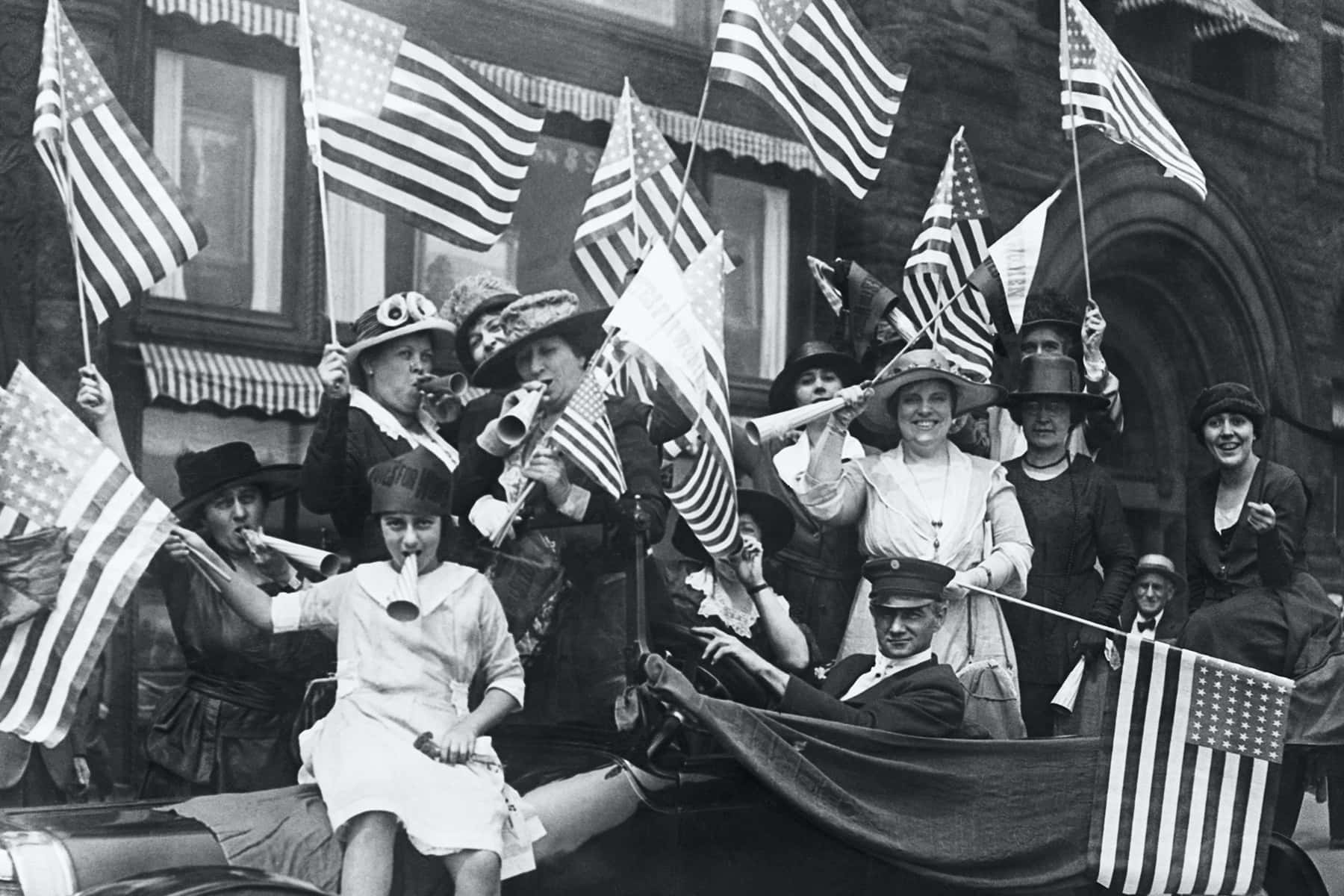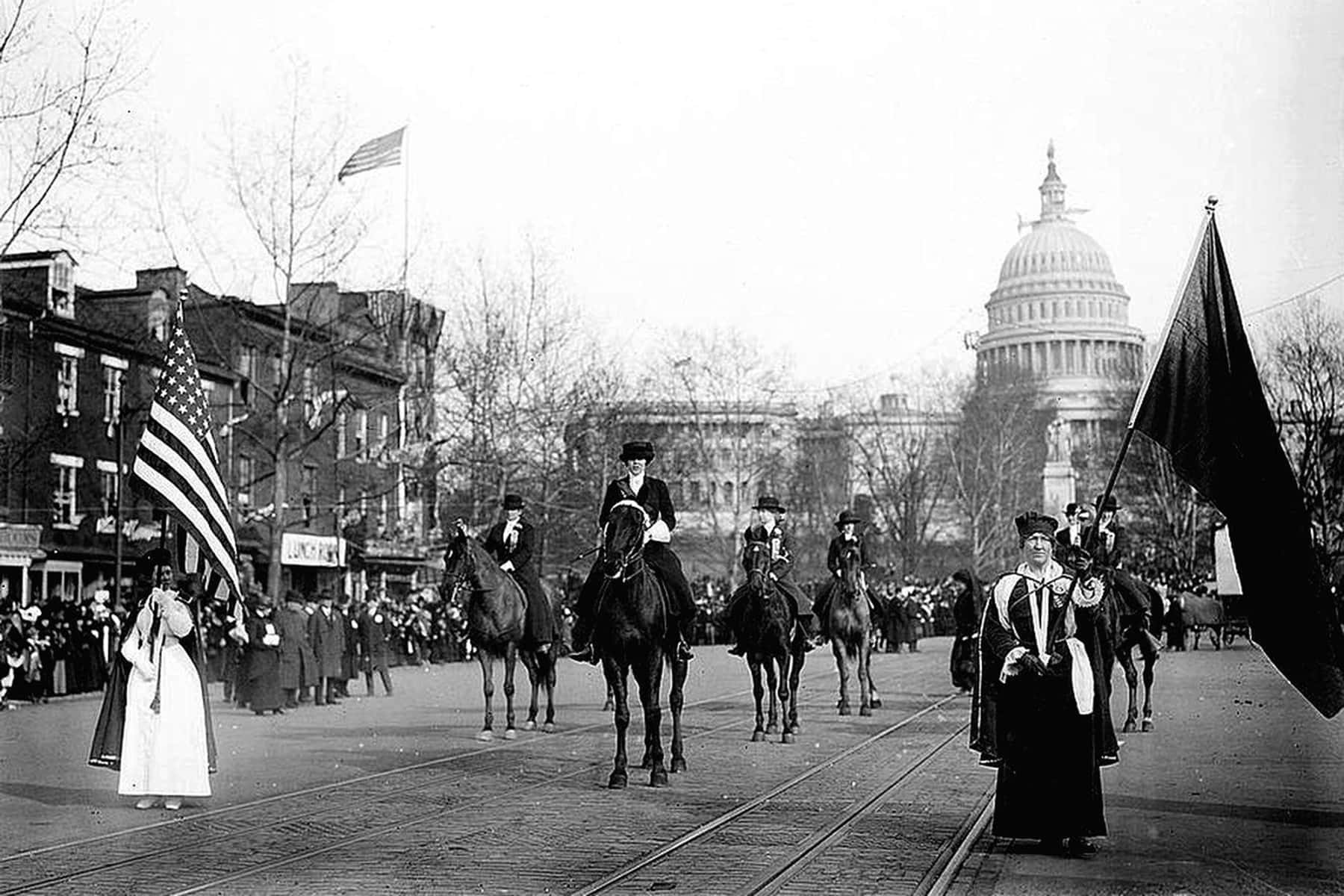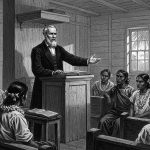
2020 marked the 100th anniversary of the Nineteenth Amendment to the U.S. Constitution, confirming women shall not be denied the right to vote, and marked the 150th anniversary of the first full United States census of African-Americans. These milestones are consequential for women, and Black women, respectively. They prompt reflection about the hard fight obtaining, retaining, and maintaining both ballot access and census accuracy.
The day the 19th Amendment was adopted, American swelled representative democracy by millions; its single largest such expansion. Despite this achievement, America continued to deny the vote to millions of women. Disenfranchising barriers would not be removed for Black women until the Voting Rights Act of 1965; Native American women until the Citizenship Act of 1924; for women ages 18 to 21 until the 26th Amendment; and for Chinese, Filipino and East Indian, Korean and Japanese female immigrants (and in some circumstances, female citizens married to immigrants) until federal legislation passed in 1943, 1946, and 1952, respectively.
The 19th Amendment not only allowed women to cast an equal ballot but also allowed them the opportunity to run for elected office. A surge in either count – of women voters or those elected – was not seen for decades, despite women being essential and influential in a variety of movements including the Human Rights, Civil Rights, Equal Rights, environmental, and the various 20th-century peace and anti-war movements.
Obstacles remained that prevented Black women from having their votes counted one hundred years ago, just as Constitutional obstacles prevented Black women from being fully counted in the United States census until one-hundred-fifty years ago. After the 13th Amendment redefined citizenship in 1868, the1870 census became the first count when each African- American tallied as one person. Until then, only 3 of every 5 slaves counted in the census, for the limited purposes of Congressional redistricting and taxation.
2020 marked the 59th presidential election and the 23rd U.S. census – when each person is counted by completing a ballot and completing a census form. In Milwaukee County, the majority of 2020 voters were women. In this historic year for both the 15th Amendment (black male suffrage) and the 19th, Milwaukee County voters elected an African-American woman as Vice-President (Kamala Harris) and as a Congresswoman (Gwen Moore).
In addition, the County’s voter elected eight women to the Wisconsin Assembly (five of whom are persons of color) and three women to the state senate (two of whom are women of color). Finally, half of Wisconsin’s ten electors to the 2020 Electoral College were women.
The next Wisconsin general election is Tuesday, April 6, 2021. The candidates on spring 2021 ballots will be known after they file nomination papers, due in early January 2021. More information about the 2021 elections can be found at myvote.wi.gov and vote411.org.
Milwaukee County’s census data currently is being tabulated by the U.S. Census Bureau for its end-of-December scheduled delivery to the President, who in turn delivers the count to Congress. In March 2020 COVID-19 protocols disrupted and replaced years of 2020 census planning – extending collection timelines and shifting collection processes that, in turn, were suddenly abbreviated by presidential order in September.
On December 18, 2020, the U.S. Supreme Court issued a census-related decision – just thirteen days before the census was scheduled to be delivered to the president. The Court reviewed a July 2020 presidential order directing the Census Bureau to present two sets of data: 1)the total census, and 2) the full census minus the total number of undocumented persons. The presidential intent is that Congress use the immigrant-purged data for Congressional reapportionment and state taxation purposes.
The Court’s majority opinion punted on the Constitutionality of a bifurcated census count, stating that until the president actually presents two sets of census data, there is no “case in controversy” for the Court to consider. As of mid-December, the U.S. Census Bureau anticipated that, due to tabulation delays, the delivery of the census might not be delivered until mid-January.
Wisconsin ranks third in the nation and territories for census compliance with a 99.9 percent reporting rate and a 72.2 percent self-reporting rate (which obviates census-taker follow-up). In 2020 census compliance, Minnesota ranks first; the State of Washington just barely edged out Wisconsin for second place. In August, Milwaukee’s census collection lagged behind the rest of the state. In autumn, local efforts, led by the City of Milwaukee’s Complete Count Committee, pushed to record every person. The count not only determines the number of representatives Wisconsin sends to Congress (currently eight) but also determines Milwaukee’s and Wisconsin’s current allocation of $675 billion in annually-available federal funds. Reliable census information can be found at: milwaukee.gov/2020Census and 2020census.gov
The Incremental Steps of Women Towards Citizenship, Civil Rights and Suffrage
The steps towards women’s official citizenship rights and suffrage were absurdly incremental. The individual states and local governments legislated such matters as eligibility for voter registration, candidacy for elected office, jury duty, as well as domestic-sphere issues of residency, and wage and property ownership; and family composition, divorce, child custody, and female roles and maternal duties.
The massive women’s civil rights movement had its formal beginnings in 1848 at the Seneca Falls Convention, and for decades was fraught with struggles and tensions over race and class both within and outside of the Movement. For instance, the Suffrage Movement leadership counter proposed that the 15th Amendment granting voting rights to African-American males should be drafted instead for educated white women. Despite toilsome work by a host of mighty advocates (such as Sojourner Truth) Black suffragists’ efforts for the 19th Amendment largely were unrecognized and unrewarded by national and state leaders.
State-based suffrage movements were a powerful means for women to obtain rights. However, they often were limited by legislatures, e.g., suffrage for school board matters only. Additionally, some states, including Wisconsin, were hostile to women’s suffrage such that only federal action would afford women any political clout.
At the turn of the 20th century, the decades of conventional advocacy by the national organizing groups began to assume more unconventional tactics. The national organizations and their splinter groups, however, held conflicting (although also complementary) strategies. Splinter groups pursued federal suffrage that focused on more radical and even militant strategies. Both suffragist factions were challenged by women organizing against women’s suffrage altogether.
Suffrage efforts became marked by the extraordinary, including massive marches throughout the country of women in white who otherwise culturally did not gather so ostentatiously. Organizers introduced novel tactics such as a new variant of lobbying, door-to-door voter outreach, and (for the first-time) picketing of the White House. With Woodrow Wilson’s unpopular entry into World War I and redefined ideas of patriotism, suffragists raised issues of inequality under the flag even as they diverted energies to the war effort. The final campaign push to secure ratification of the 19th Amendment came during the chaos of the anti-war movement and the throes of the Spanish Influenza of 1918.
Spectacles such as violence against the Silent Sentinels (peaceful protesters), police brutality, and incarceration of suffragists served to weaken suffrage opposition. After the 1919 ratification of the 18th Amendment creating Prohibition, many of the women who obtained that victory joined actively with the Suffrage Movement. With an accumulation of states adopting partial or full suffrage and the mounting chaos of the time, President Wilson saw the inevitability of women’s suffrage. Congress passed the 19th Amendment in May 1919 and sent it to the states for ratification, ultimately certified by enough states on August 26, 1920.
Before 1920, decades of legislation state-by-state (largely in the West) provided women candidacy for local elected office. However, early on the 19th Amendment did not generate the same surge in women holding office or even voting as had the 15th Amendment. African-American males’ suffrage generated a surge in Blacks voting and holding office -including election to seats in Congress within a couple of years of its 1870 passage. By contract in 1920 two Wisconsin women were Congressional candidates. Both lost miserably. The Badger State would be the last in the Union to send a woman to Congress – seated in 1999.
Wisconsin had not been a pro-suffrage state. It resisted legislation for state suffrage for decades. Not until 1885 would the legislature provide even limited suffrage to women – for school board elections only. However, even those votes were uncounted. The ballots had all the elective offices on one page, and the tabulators could not discern or trust that women voters didn’t cast their ballots for all the offices presented. A 1912 suffrage referendum failed miserably.
Ironically, Wisconsin was the first state to file its ratification of the 19th Amendment in Washington D.C. As one of a few convened legislatures in May 1919, Wisconsin suffragists immediately could present and get legislators to ratify the amendment. Despite the quick achievement, biases persisted. When the Wisconsin legislature convened in its next session, anti-suffragists introduced legislation to immediately repeal the ratification vote.
Despite or maybe cause of such anti-suffrage attitudes, a remarkable number of Wisconsin women held or seized power at the movement’s national level. Emma Brown of Fort Atkinson published and wrote the longest-running suffrage, temperance, and progressive newspaper in the United States. (1857-1889). Theodora Youmans of Waukesha, pioneer journalist and editor, founded the Wisconsin League of Women Voters, served as president of the WWSA (WWSA), became a National Woman Suffrage Association leader and presidential lobbyist. Dr. Laura Ross Wolcott of Milwaukee, the third woman in the United States licensed to practice medicine, founded the WWSA and hosted the first national suffrage convention in 1867. Olympia Brown of Racine, the first woman in America to enter the ministry of an organized church, served as a confidant and consultant to Lucy Stone and Elizabeth Cady Stanton. She lectured throughout the nation, including during one year conducting a tour of 300 lectures. She was a consistent delegate to national suffrage conventions and served as president of the WWSA. Carrie Chapman Catt of Palmyra served as president of the NWSA and founded the League of Women Voters in 1920, the International Alliance of Women in 1904, and what became the Women’s International League for Peace and Freedom in 1915.
The First Full Count – The 1870 Census
2020 also marks the 150th anniversary of the first time that all African-Americans were counted in the decennial census, as provided in the U.S. Constitution Article I, Section 2 and the 14th Amendment. The 1870 census included a variety of now dated designations for the populations it recorded.
The census added the categories of “Native” and “Foreign” to its previous population breakdowns of “White” and “Colored.” In 1870 Wisconsin and Milwaukee County populations totaled 1,054,070 and 89,930, respectively. The census recorded 1,199 “Free Colored” males and 934 females in Wisconsin; Milwaukee County recorded a total of 185 — modest increases from the 1860 census of 1171 persons and 107 persons, respectively.
Wisconsin overall ranked as the 15th most populous state of the 37 states then admitted. It ranked eleventh highest with a “White” population (New York ranked first), and thirteenth highest with a “Colored” population (Georgia ranked 1st). The only recorded “Slaves” in Wisconsin appear in the 1840 census – with ten “Slaves” in Grant County and one in Iowa County. The 1840 state census included 196 “Free Colored” persons.
The City of Milwaukee’s 1870 population totaled 71,440, including 175 Black persons notably concentrated in the then 4th Ward. In 1970, one hundred years after the first full African-American census, the Census Bureau estimated that over six percent of African Americans went uncounted, compared to only two percent of European Americans.
Today, Milwaukee is a city of majority minorities; an accurate count of all residents is pending with the 2020 U.S. Census. In 2019, Milwaukee Mayor Tom Barrett convened the Greater Milwaukee 2020 Census Complete Count Committee stating, “I want every household to participate, and I want to engage as many residents as possible to make sure no one goes uncounted.”
ALL persons must be counted, regardless of age, race, ethnic group, citizenship status, or immigration status. The 2020 census questionnaire does not include a question regarding citizenship or immigration status. A 2019 U.S. Supreme Court decision precluded the Trump Administration from adding a citizenship census question, stating the reason given for asking it was “pretextual.”
The Census Bureau, operated by the U.S. Department of Commerce, is bound by federal law to keep ALL information confidential. The Bureau cannot release any identifiable information about a person, a household, or a business. The law ensures that ALL private data is protected and that no answers can be used against a respondent by any government agency, law enforcement agency, or court.
For the first time in 240 years, the U. S. Census Bureau allowed online or phone options for submitting census responses – in addition to the traditional mailed option, if one prefers. The COVID-19 crisis disrupted in-person, census-taker visits, making the online option a critical tool for an accurate and complete 2020 census.
As residents’ options for census data collection have increased over time so have its uses. The annual distribution of more than $675 billion in federal funds – over the next ten years – is based on census data. The funds support education, housing, transportation, health services, etc., and are critical to the operations of local communities. But the original census count purposes remain- – the allocation of seats Wisconsin fills in the U.S. Congress and the proportionate taxation of states.
© Photo
Library of Congress















